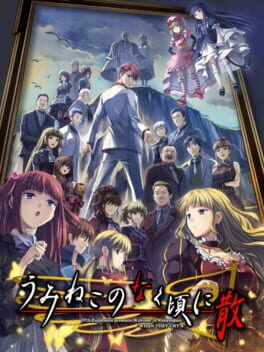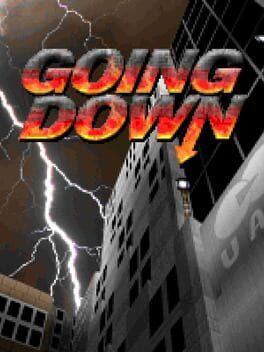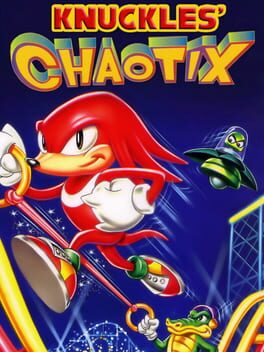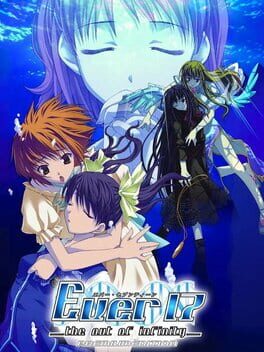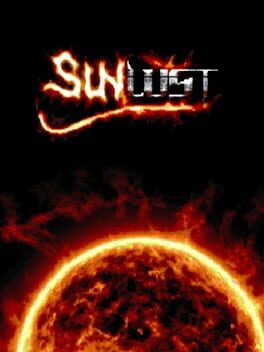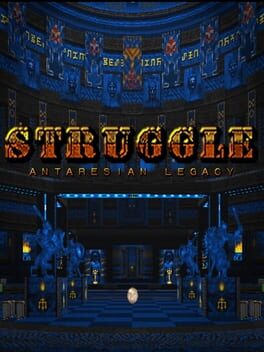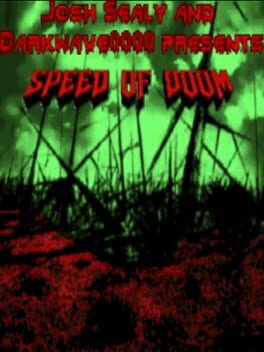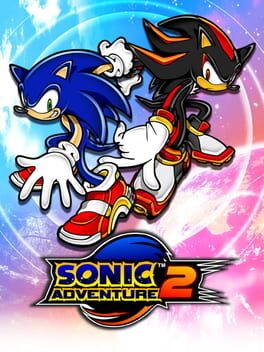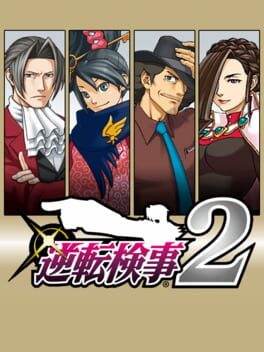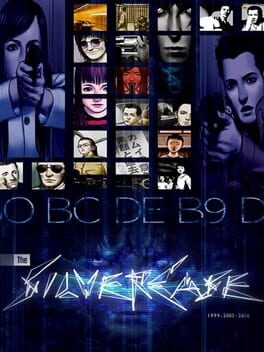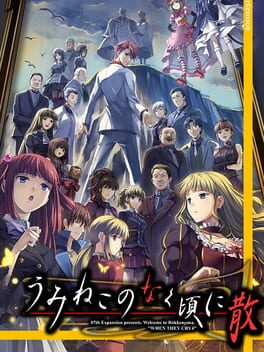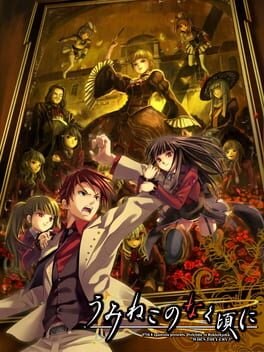Terrace
What can I even say? I'm far from the first person to fall in love with this story, and I certainly won't be the last. I'm sure my reasons are incredibly common, but I'd like to lay them out, regardless.
First of all, let's talk about the production. This is a perfectly directed visual novel. The original sprites have so much heart, and the sound design is brilliant. The soundtrack is genuinely one of my favorites in any medium.
The cast, which was already so wonderful and lively in the first half, becomes so much more well-rounded here. Old characters who didn't quite have the chance to shine, like Ange, Bern, and Lambda, are all given their due time, and highly memorable new characters make their appearances as well, like Erika, Dlanor, and Will.
The crossover between mystery and fantasy is a precarious one, and while some people might not like the direction the story takes towards its end, I find it highly touching. This theme, which evolves naturally over the course of eight unique episodes, is simple but beautiful.
Truly, this is an incredibly special and unique work of fiction. Thank you, Ryukishi07.
First of all, let's talk about the production. This is a perfectly directed visual novel. The original sprites have so much heart, and the sound design is brilliant. The soundtrack is genuinely one of my favorites in any medium.
The cast, which was already so wonderful and lively in the first half, becomes so much more well-rounded here. Old characters who didn't quite have the chance to shine, like Ange, Bern, and Lambda, are all given their due time, and highly memorable new characters make their appearances as well, like Erika, Dlanor, and Will.
The crossover between mystery and fantasy is a precarious one, and while some people might not like the direction the story takes towards its end, I find it highly touching. This theme, which evolves naturally over the course of eight unique episodes, is simple but beautiful.
Truly, this is an incredibly special and unique work of fiction. Thank you, Ryukishi07.
2014
This stupendous megawad has very rightly been hailed as some of the best that Doom modding has to offer. Attention
is often drawn to its brisk pacing, snappy combat, witty humor, phenomenal use of Doom 2's stock textures, palpable atmosphere, and its singular vision as a one-man creative project. But I want to point out something else that Going Down does very well, which is its difficulty. Doom aficionados who play exclusively on ultra-violence will often point to this as one of Doom's most difficult offerings, but those who cower at that warning (such as myself), fear not. While ultra-violent is the bread and butter of most seasoned Doom players, the lower difficulty settings in Going Down are just as well-balanced. What has the reputation of being notoriously difficult is, in fact, more accessible than you might think. Either way, Doom casuals shouldn't let Going Down's difficult reputation and penchant for "slaughter maps" (somewhat debatable) put them off. This is a brilliant work of horror comedy fun that no FPS fan should miss.
is often drawn to its brisk pacing, snappy combat, witty humor, phenomenal use of Doom 2's stock textures, palpable atmosphere, and its singular vision as a one-man creative project. But I want to point out something else that Going Down does very well, which is its difficulty. Doom aficionados who play exclusively on ultra-violence will often point to this as one of Doom's most difficult offerings, but those who cower at that warning (such as myself), fear not. While ultra-violent is the bread and butter of most seasoned Doom players, the lower difficulty settings in Going Down are just as well-balanced. What has the reputation of being notoriously difficult is, in fact, more accessible than you might think. Either way, Doom casuals shouldn't let Going Down's difficult reputation and penchant for "slaughter maps" (somewhat debatable) put them off. This is a brilliant work of horror comedy fun that no FPS fan should miss.
1995
So, there's a lot to appreciate about this game. There's the memorable and loveable characters, who all have excellent visual designs and are complimented by an awesome English dub. There's the music, which hauls its weight in regards to creating an atmosphere that can go from tense and noir-esque to lighthearted and quirky without missing a beat. There's the theming: the failure of bureaucracy and institutions, the nature of identity and what makes us who we are, and the nature of truth, wonderfully symbolized by eyes.
But what I really want to talk about is how AI plays with its genre, and how it connects to Uchikoshi's earlier works to create a story that builds off the author's prior works to create his best yet.
Now, one could say that nearly every Uchikoshi work has about the same underlying genre: sci-fi mystery. But they're not identifiably so from the onset. For example, Nine Hours, Nine Persons, Nine Doors is a Saw-esque escape room story, while Ever 17 and Remember 11 are about trying to survive in an isolated environment.
AI, conversely, is a sci-fi mystery and nothing but. This creates a set of expectations that the VN then soundly subverts. You'd think that an Uchikoshi story that turns his usual "underlying" genre into the "overlaying" genre would be more mysterious, more scientifically ambitious. But it's not. Instead, he uses genre conventions to create a story that's more introspective and contemplative, much more concerned with the question of "why?" than any of Uchikoshi's previous works.
This is partly where the VN's strength in character writing comes in. While other Uchikoshi stories have solid enough characters, this is a notable step up for him. Much of that is precisely because this VN places so much more emphasis on character over plot. But it's also because of how the characters relate to the themes of identity and truth that makes them seem so, well, real.
And, of course, the way the VN plays with genre conventions is just as much related to the plot as it is to the characters. A common complaint this story gets is that the plot is a little too predictable, that it's not a wildly erratic as some of Uchikoshi's other works. But it uses this weakness to its advantage. As the truth becomes increasingly obvious even before it's revealed, the VN begins to question what it really means, if the truth is worth revealing in full at all.
Another great example of how the VN plays with expectations relates to the culprit. Without saying too much, there's a moment where it seems, at first, that Uchikoshi has broken what is commonly regarded as one of Van Dine's single most important Commandments (if you don't know what those are, look them up... or read Umineko). It seems cruel trickery at first, until you notice the pattern. But by the time you have, so has Date. And not only that, he may have just figured out exactly what it means.
Regardless, this smart, borderline self-aware VN is surely incredible on its own, but is even better in the context of Uchikoshi's previous work. Here, he finally dials back the wild unpredictability of his plots to look more inward, and the results are just as awesome as they sound.
Also, if you don't get up and dance and sing along with the finale, you are soulless.
But what I really want to talk about is how AI plays with its genre, and how it connects to Uchikoshi's earlier works to create a story that builds off the author's prior works to create his best yet.
Now, one could say that nearly every Uchikoshi work has about the same underlying genre: sci-fi mystery. But they're not identifiably so from the onset. For example, Nine Hours, Nine Persons, Nine Doors is a Saw-esque escape room story, while Ever 17 and Remember 11 are about trying to survive in an isolated environment.
AI, conversely, is a sci-fi mystery and nothing but. This creates a set of expectations that the VN then soundly subverts. You'd think that an Uchikoshi story that turns his usual "underlying" genre into the "overlaying" genre would be more mysterious, more scientifically ambitious. But it's not. Instead, he uses genre conventions to create a story that's more introspective and contemplative, much more concerned with the question of "why?" than any of Uchikoshi's previous works.
This is partly where the VN's strength in character writing comes in. While other Uchikoshi stories have solid enough characters, this is a notable step up for him. Much of that is precisely because this VN places so much more emphasis on character over plot. But it's also because of how the characters relate to the themes of identity and truth that makes them seem so, well, real.
And, of course, the way the VN plays with genre conventions is just as much related to the plot as it is to the characters. A common complaint this story gets is that the plot is a little too predictable, that it's not a wildly erratic as some of Uchikoshi's other works. But it uses this weakness to its advantage. As the truth becomes increasingly obvious even before it's revealed, the VN begins to question what it really means, if the truth is worth revealing in full at all.
Another great example of how the VN plays with expectations relates to the culprit. Without saying too much, there's a moment where it seems, at first, that Uchikoshi has broken what is commonly regarded as one of Van Dine's single most important Commandments (if you don't know what those are, look them up... or read Umineko). It seems cruel trickery at first, until you notice the pattern. But by the time you have, so has Date. And not only that, he may have just figured out exactly what it means.
Regardless, this smart, borderline self-aware VN is surely incredible on its own, but is even better in the context of Uchikoshi's previous work. Here, he finally dials back the wild unpredictability of his plots to look more inward, and the results are just as awesome as they sound.
Also, if you don't get up and dance and sing along with the finale, you are soulless.
Insane. Insane premise, insane execution, insanely deliberate. It starts smart and slow by initially having a focus on SOL and romcom. This works wonders to set up the cast, which by the end, is truly amazing and one of a kind. All of this culminates in the true route, which is one of the ballsiest pieces of fiction I've come across. The first four routes are excellent in their own ways, but the true route is a masterpiece in its own right. Bravo.
2015
One of the most endearing aspects of Doom mapping is how distinct and unique the maps have become over time. While mods that provide an extensive overhaul to Doom's aesthetic have always existed, like 1994's Aliens TC, it wasn't until some years later that this practice became commonplace. One look at the most noteworthy and influential megawads of the 2010s is all you need to confirm this. Ancient Aliens, Eviternity, and Back to Saturn X are just three examples of blockbuster megawads with not just their own unique texturing, but also well-defined gameplay loops. Of course, the uniqueness of different Doom maps extends not just to their visuals, but also their feel, what it's like to play it. Oftentimes these aspects compliment each other directly. A good Doom map, then, is one that establishes its own unique identity both on a surface level as well as a deeper one.
This is something Sunlust accomplishes in spades. Sunlust looks nothing like typical Doom, and it feels nothing like typical Doom, either. But somehow, to me, Sunlust IS Doom. It is Doom because it is the megawad that most embodies the definition of the word. The name of the game with Sunlust is awe-inspiring. You stand in awe of the grand architecture. The dazzling environments. And, of course, the epic fights. A recurring motif in Sunlust is that it will start a fight with every enemy facing away from you, unalerted to your presence. With the initiative on you to begin the fight, you're free to take a moment both to admire the precise combat geometry as well as to wonder how the hell you're going to make it out of this alive.
And like I've said with many of my other Doom reviews, don't be put off by the legends of this megawad's difficulty. Don't feel like you have to play on ultra-violence. I sure didn't, and I still loved it! I promise the lower difficulties are much more manageable.
Sunlust, I like to imagine, is Doom in its purest, most distilled form. It is the height of the idea of Doom as a "combat puzzle" game, where each encounter takes careful thought, deliberate preparation, and precise execution in order to best. It is a perfect marriage of visual aesthetics and gameplay style. It is, simply, a work of art.
This is something Sunlust accomplishes in spades. Sunlust looks nothing like typical Doom, and it feels nothing like typical Doom, either. But somehow, to me, Sunlust IS Doom. It is Doom because it is the megawad that most embodies the definition of the word. The name of the game with Sunlust is awe-inspiring. You stand in awe of the grand architecture. The dazzling environments. And, of course, the epic fights. A recurring motif in Sunlust is that it will start a fight with every enemy facing away from you, unalerted to your presence. With the initiative on you to begin the fight, you're free to take a moment both to admire the precise combat geometry as well as to wonder how the hell you're going to make it out of this alive.
And like I've said with many of my other Doom reviews, don't be put off by the legends of this megawad's difficulty. Don't feel like you have to play on ultra-violence. I sure didn't, and I still loved it! I promise the lower difficulties are much more manageable.
Sunlust, I like to imagine, is Doom in its purest, most distilled form. It is the height of the idea of Doom as a "combat puzzle" game, where each encounter takes careful thought, deliberate preparation, and precise execution in order to best. It is a perfect marriage of visual aesthetics and gameplay style. It is, simply, a work of art.
Although it isn't perfect, Struggle is one of the most significant and impactful Doom megawads ever crafted. Antares is in many ways a mapmaker in a category of his own, as every level here sports astounding attention to detail. There are a lot of reasons for this. Every map has a palpable atmosphere that feels tangible and lived-in. Though the settings are fantastical, they feel real, and that isn’t an easy feat in classic Doom. On top of that, Antares' liberal use of one-way doors allows sections of each map to link together surprisingly naturally. If you're ever looking to backtrack, Antares has your back.
But where Struggle really shines, of course, is the combat. The megawad's beefed up weapon set features a replacement for every weapon, with the sole exception of the super shotgun (you can't improve perfection). These new weapons are on the whole much more dangerous than the old arsenal, particularly the guns akimbo, a lightning fast chaingun replacement that stunlocks most enemies. The grenade launcher, which fittingly replaces the rocket launcher, isn't quite as good at crowd control as its predecessor, though the absolutely meteoric Leichenfaust, the BFG9000 replacement, more than makes up for this. Also, the melee weapon being a hammer is a very cool nod to Oldboy, a favorite film of both Antares and myself.
Antares throws in a few custom monsters and provides some well-rounded buffs to the returning bestiary, making seemingly familiar encounters more dangerous than players might expect. Combat encounters don't particularly lean into slaughter-esque high monster counts until the end, though don't take that to mean that this game is easy. Antares' masterfully unique flavor of classic Doom combat is delightfully strategic, with arenas and monster placement rewarding quick thinking and mastery of your new arsenal.
I would highly recommend playing Struggle with a pistol start each map. Antares practically litters the floor with ammo, so you'll never be short on that. Each map's pacing of finding its weapons is deliberate and progressively brisk. Each instance of finding the Leichenfaust feels like an event unto itself.
Unfortunately, Struggle isn't perfect. While it is doubtlessly a gorgeous game to look at, these environments tend to blend together. Most Struggle maps can be sorted into one of two visual categories: techbase or primary color demon domain. The latter category is almost entirely blue, though there is at least one red map and one green map. Again, it's not that the maps look bad, just that many of them look the same. This monotony is a difficult issue to completely ignore; especially early on, where techbases reign supreme. That so many of the levels look so similar visually feels like a disservice to the undeniable love and care that each one was crafted with.
There's also the final boss, which is unsurprisingly also a disappointment. Classic Doom megawads have been known to fumble the bag at the last moment, but Struggle's final map is a rather egregious case. Thankfully, this is mostly made up for by a legendary preceding duology of maps. Map30 notwithstanding, Antares doesn't seem to know how to make a bad map, but maps 28 and 29 are on another level entirely.
I apologize if this review seems overly long, but I suppose, in a way, I'm just astonished by how much a Doom megawad can make me feel. Struggle is perfectly named not just for its difficulty, but also for its creation. Playing through this game, you can't help but stop and admire how tirelessly Antares must have worked to make everything fit so perfectly. The effort that this one-man project evidently took is equal parts overwhelming and inspiring. I'm beyond grateful not just for Antares, but also for all the modders and coders who came before him, who laid the groundwork for this masterpiece.
Struggle is the story of one man pursuing what is clearly his passion, endeavoring to create a Doom megawad that is fast-paced, carefully rebalanced, and immaculately detailed both visually and in terms of its progression. While there are a few issues here and there, namely the monotony of the environments and the disappointing final boss, I think there's no doubt that Antares succeeded in his goal.
But where Struggle really shines, of course, is the combat. The megawad's beefed up weapon set features a replacement for every weapon, with the sole exception of the super shotgun (you can't improve perfection). These new weapons are on the whole much more dangerous than the old arsenal, particularly the guns akimbo, a lightning fast chaingun replacement that stunlocks most enemies. The grenade launcher, which fittingly replaces the rocket launcher, isn't quite as good at crowd control as its predecessor, though the absolutely meteoric Leichenfaust, the BFG9000 replacement, more than makes up for this. Also, the melee weapon being a hammer is a very cool nod to Oldboy, a favorite film of both Antares and myself.
Antares throws in a few custom monsters and provides some well-rounded buffs to the returning bestiary, making seemingly familiar encounters more dangerous than players might expect. Combat encounters don't particularly lean into slaughter-esque high monster counts until the end, though don't take that to mean that this game is easy. Antares' masterfully unique flavor of classic Doom combat is delightfully strategic, with arenas and monster placement rewarding quick thinking and mastery of your new arsenal.
I would highly recommend playing Struggle with a pistol start each map. Antares practically litters the floor with ammo, so you'll never be short on that. Each map's pacing of finding its weapons is deliberate and progressively brisk. Each instance of finding the Leichenfaust feels like an event unto itself.
Unfortunately, Struggle isn't perfect. While it is doubtlessly a gorgeous game to look at, these environments tend to blend together. Most Struggle maps can be sorted into one of two visual categories: techbase or primary color demon domain. The latter category is almost entirely blue, though there is at least one red map and one green map. Again, it's not that the maps look bad, just that many of them look the same. This monotony is a difficult issue to completely ignore; especially early on, where techbases reign supreme. That so many of the levels look so similar visually feels like a disservice to the undeniable love and care that each one was crafted with.
There's also the final boss, which is unsurprisingly also a disappointment. Classic Doom megawads have been known to fumble the bag at the last moment, but Struggle's final map is a rather egregious case. Thankfully, this is mostly made up for by a legendary preceding duology of maps. Map30 notwithstanding, Antares doesn't seem to know how to make a bad map, but maps 28 and 29 are on another level entirely.
I apologize if this review seems overly long, but I suppose, in a way, I'm just astonished by how much a Doom megawad can make me feel. Struggle is perfectly named not just for its difficulty, but also for its creation. Playing through this game, you can't help but stop and admire how tirelessly Antares must have worked to make everything fit so perfectly. The effort that this one-man project evidently took is equal parts overwhelming and inspiring. I'm beyond grateful not just for Antares, but also for all the modders and coders who came before him, who laid the groundwork for this masterpiece.
Struggle is the story of one man pursuing what is clearly his passion, endeavoring to create a Doom megawad that is fast-paced, carefully rebalanced, and immaculately detailed both visually and in terms of its progression. While there are a few issues here and there, namely the monotony of the environments and the disappointing final boss, I think there's no doubt that Antares succeeded in his goal.
2010
Speed of Doom is probably the most conflicted I've been on a Doom megawad, and the reason why is abundantly obvious to me. The essence of this megawad is its unique synthesis of classical inspirations with forward-thinking originality. It is a game of balances, and nowhere is that clearer than its authorship. Speed of Doom features the work of two mappers, Joshy and Darkwave, who split the 32 map load into an even 16 each. The game continuously alternates between each mapper, with Joshy handling the odd-numbered maps and Darkwave handling the even-numbered maps (with the exception of the two secret maps).
There's no nice way to say this, so I'll be blunt. If this mapset were entirely Darkwave's work, I'd be inclined to bump it up a point. If it were entirely Joshy's, I'd be inclined to bump it down one. On the whole, I find Darkwave to be a much more engaging and fair mapmaker than Joshy. Darkwave's work fluctuates between pensive and explosive, atmospheric and dramatic. There is a strong sense of momentum in each of Darkwave's maps, which makes them highly rewarding to pistol start.
Joshy, on the other hand, has a frustrating penchant for cramped spaces and awkward weapon progression from pistol start. Speaking of pistol start, I should probably mention that I beat every map pistol start with the exception of one: Poison Ivy II. This map is everything wrong with Joshy's style in a nutshell. I beat it, of course, but only after a swift "get weapons" input into the console. Now, all of this is not to say that I think Joshy's maps are all bad. In fact, there are few that I quite enjoy. But the simple matter is that I find his maps generally much less engaging than Darkwave's.
Speed of Doom's back and forth between its two co-authors is what defines its unique progression, but the difference in quality between its two co-authors' styles is ultimately what keeps me from calling it a new favorite. It's absolutely worth playing for any classic Doom fan, just know that, for some, Joshy's style might be a more acquired taste than Darkwave's. Then again, who's to say the opposite isn't also true?
There's no nice way to say this, so I'll be blunt. If this mapset were entirely Darkwave's work, I'd be inclined to bump it up a point. If it were entirely Joshy's, I'd be inclined to bump it down one. On the whole, I find Darkwave to be a much more engaging and fair mapmaker than Joshy. Darkwave's work fluctuates between pensive and explosive, atmospheric and dramatic. There is a strong sense of momentum in each of Darkwave's maps, which makes them highly rewarding to pistol start.
Joshy, on the other hand, has a frustrating penchant for cramped spaces and awkward weapon progression from pistol start. Speaking of pistol start, I should probably mention that I beat every map pistol start with the exception of one: Poison Ivy II. This map is everything wrong with Joshy's style in a nutshell. I beat it, of course, but only after a swift "get weapons" input into the console. Now, all of this is not to say that I think Joshy's maps are all bad. In fact, there are few that I quite enjoy. But the simple matter is that I find his maps generally much less engaging than Darkwave's.
Speed of Doom's back and forth between its two co-authors is what defines its unique progression, but the difference in quality between its two co-authors' styles is ultimately what keeps me from calling it a new favorite. It's absolutely worth playing for any classic Doom fan, just know that, for some, Joshy's style might be a more acquired taste than Darkwave's. Then again, who's to say the opposite isn't also true?
2001
The focus on overarching story as opposed to each case's episodic narrative creates an experience that is very different from every other Ace Attorney game. The character writing and dialogue is also a bit stronger than the most of the other games in the series. The cast is very strong, making clever use of returning characters, as well as introducing some memorable newcomers. The villains are also particularly strong here. I still think the game on the whole is just a bit weaker than Trials and Tribulations, but its rightful confidence in its underlying mystery lends itself to a wholly unique and enjoyable Ace Attorney experience.
2016
Definitely rough around the edges, but with a whole lot of heart. The presentation is uniquely perfect, and the atmosphere does an excellent job minimalistically communicating the setting, as is typical of the genre. Some of the characters, namely the Transmitter characters that aren't Sumio or Tetsugoro, could be more tightly characterized. The Placebo plotline is on the whole more compelling than the Transmitter plotline, and a lot of that is owed entirely to Tokio Morishima, the story's best character.
As far as I'm concerned, an utterly perfect conclusion. Every character has a moment to shine, and in a story with a cast this good, that's a great thing. But what's really special here is the theming, and the constant push to carve your own path in life. Umineko has always been metatextual, and treading that line would surely be a delicate task for the final episode, but the balance struck here is simply, well, miraculous.
2023
While the general consensus seems to be that you should go into this as blind as possible, I'll be the voice of dissent and say that you should do what works for you. If you, like me, tend to shy away from horror games, it might be worth watching a video essay first, and then playing the game afterwards, so that you feel "prepared." But if you feel like you can handle it, then you should definitely go for it blind. Either way, the video essays are definitely worth watching for their deep dives into the supplemental lore. Whatever way you decide to approach this wonderfully unique experience is fine. Just make sure you don't miss it.
Umineko's question arcs are, unsurprisingly, masterful. Every piece of their puzzle exemplifies Ryukishi's growth as a writer, and his ability to craft mysteries that deliver themselves both subtly and intensely, occasionally at once. The cast is evidently this VNs strongest point. The episodic format effortlessly demonstrates each individual character's potential to carry large portions of the story, a strength used to great effect.
Certainly, I suspect many of my opinions on these four arcs will change after reading the ensuing answer arcs. But for now, clichéd as it may be, I wouldn't be honest if I said anything other than that this as one of the most ambitious, well-crafted, and yes, loving VNs I've ever read.
Certainly, I suspect many of my opinions on these four arcs will change after reading the ensuing answer arcs. But for now, clichéd as it may be, I wouldn't be honest if I said anything other than that this as one of the most ambitious, well-crafted, and yes, loving VNs I've ever read.
This is easily the most experimental and metatextual episode so far, so I have to give it props for that. I think this is probably the first episode where the theming is more interesting than the characters, which isn't necessarily a good or bad thing, just a change of pace. I wanted to like it more overall, but I think some of the stuff involving the servants' romances were integrated a little haphazardly. Like the two even-numbered episodes preceding it, this is another Umineko episode that tries to do a little too much all at once, does a good job of most of it, but doesn't take the necessary steps to tie everything neatly together.
